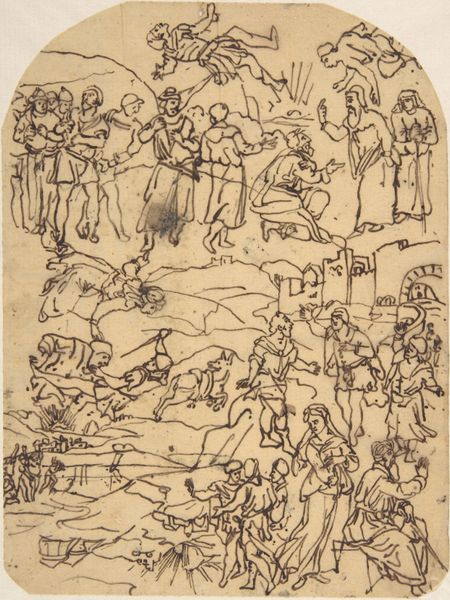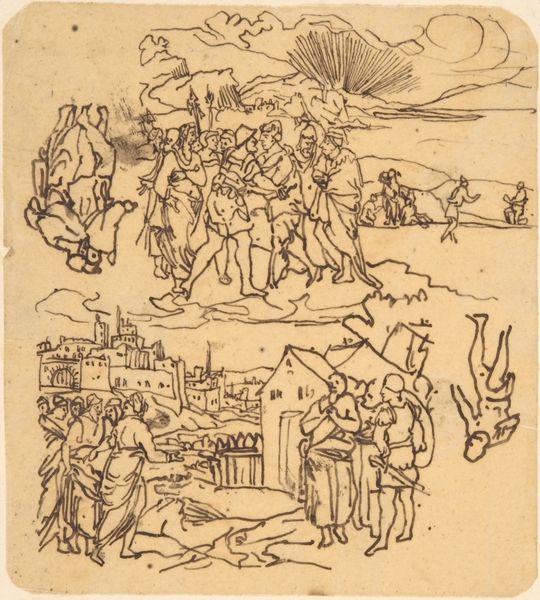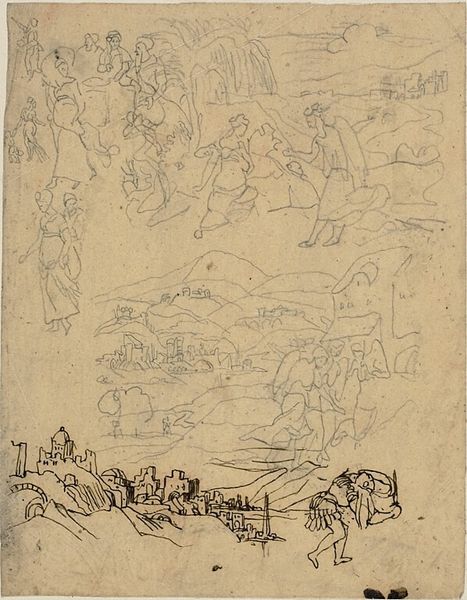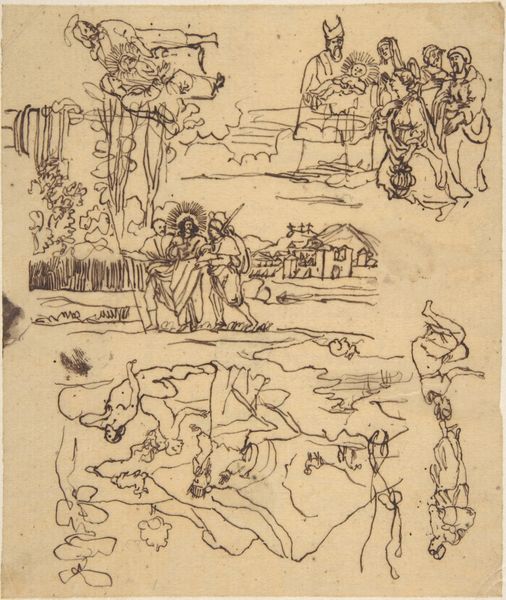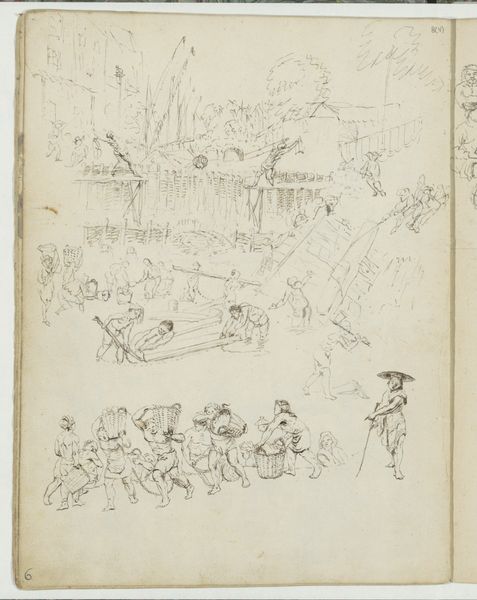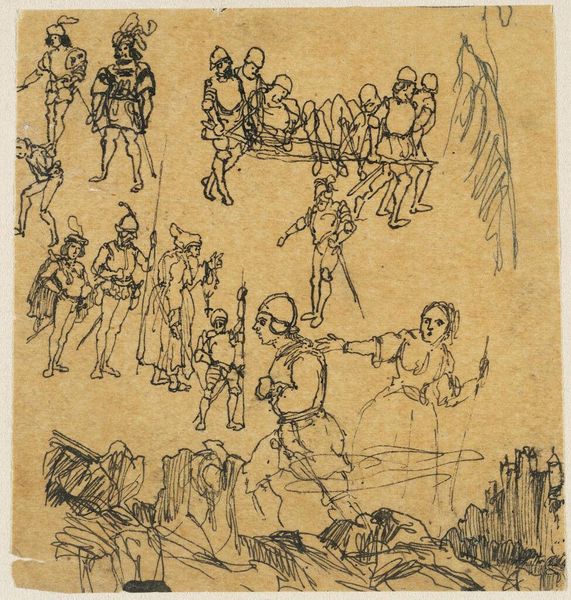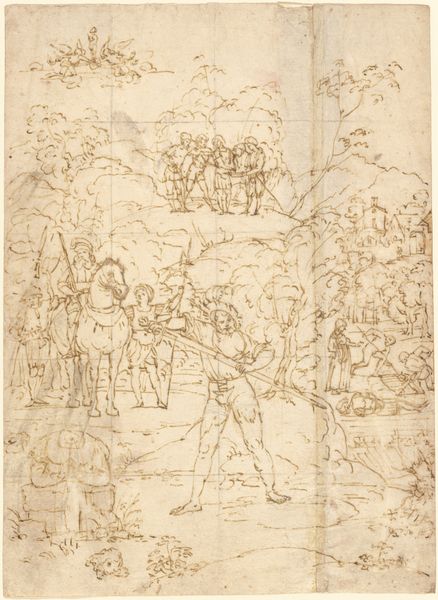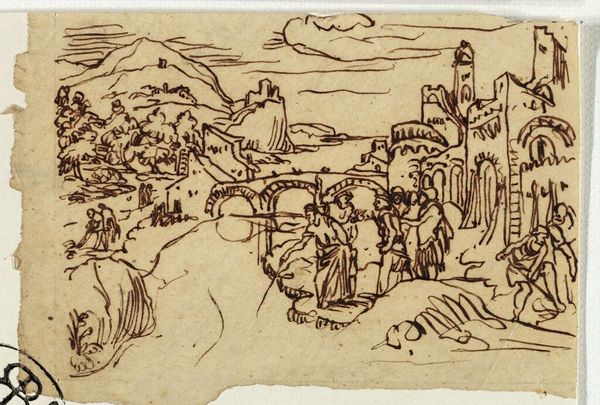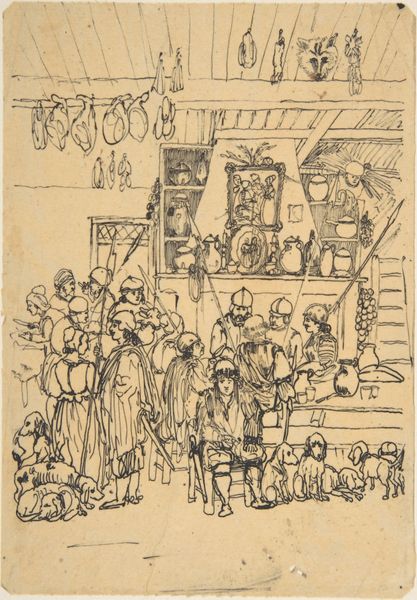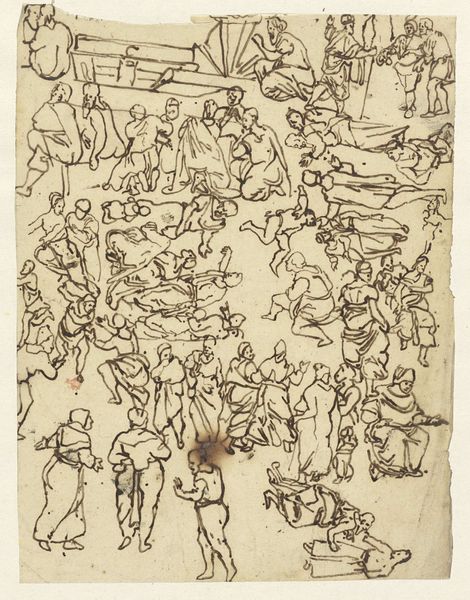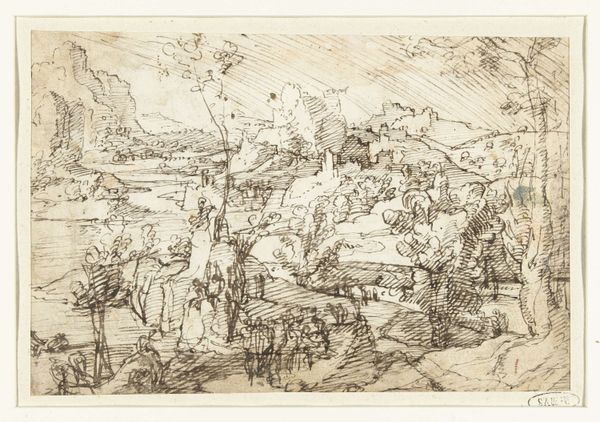
drawing, paper, ink, pen
#
drawing
#
narrative-art
#
figuration
#
paper
#
ink
#
line
#
pen
Dimensions: 149 × 122 mm
Copyright: Public Domain
Curator: What a fascinating collection of images densely packed on a single sheet. This pen and ink drawing, known as "Sheet of Sketches: The Life of Christ," comes to us from Rodolphe Bresdin. Editor: Overwhelming. My first reaction is disorientation; it's like peering into a fractured mirror reflecting biblical stories. Are those angels tumbling down from the sky? Curator: Quite possibly! Bresdin, active in 19th century France, often explored religious themes, though in a highly individualistic manner. The loose rendering of multiple scenes and the lack of a clear focal point feel characteristic of his wider body of work. His stylistic choices are crucial to how it communicates meaning and how it would've been perceived by his contemporary audience. Editor: Definitely. Considering its creation in 19th-century France, against a backdrop of social upheaval and evolving religious beliefs, this jumble of vignettes might challenge established orthodoxies through its very form. Note how the hierarchy in conventional religious art is completely scrambled! Curator: Indeed. There’s an anti-authoritarian feeling, but also a democratizing impulse here. Christ's narrative isn't presented as one easily consumed spectacle but broken down, mixed, and ultimately open for individual interpretation. Its public role, in this sense, is to force introspection rather than blind adherence. Editor: I see figures that appear marginalized or dispossessed strewn throughout. Look at those prone bodies along the left edge, the almost chaotic mass near the bottom – are they victims? And do those positions relate to more contemporary ideas of oppression? There seems to be a subtle dialogue about power embedded in this seeming chaos. Curator: That reading has significant weight. The imagery definitely seems imbued with a feeling of the precariousness of life. And perhaps Bresdin is making a pointed, if subtle, comment about the human cost of belief itself. I wonder if it can allude to broader narratives surrounding political conflict of his time. Editor: Perhaps. The strength lies in its ambiguity and its accessibility. The messiness almost encourages us to dig into the underlying socio-political dimensions without lecturing or being obvious. We, as viewers, complete the narrative. Curator: That’s a refreshing reminder of our role when studying this art. Thanks to pieces like this one, we are prompted to question the standard ways we read both art history and contemporary theory. Editor: Exactly, and its lasting power is how the sketches compel us to connect across these eras and continue the critical conversation, encouraging future analysis.
Comments
No comments
Be the first to comment and join the conversation on the ultimate creative platform.
